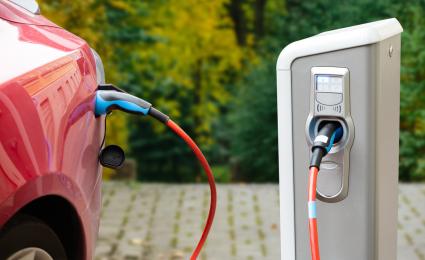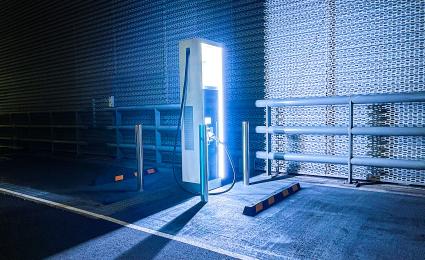Battery Monitor 2022 assesses the entire lithium-ion value chain, focusing on sustainability, technological progress, the electric vehicle market and raw material availability.


Battery Monitor 2023: An assessment of the current and future battery value chain
The battery market continues to boom, but the problems are growing – a look at the latest developments and implications
Market demand for batteries will soar from around 800 GWh in 2022 to 4,900 GWh in 2030, LFP batteries will soon become mainstream, sodium-ion cells enter the market and battery players must move quickly to secure raw material supplies. These are among the key findings of the Battery Monitor 2023 report, prepared by Roland Berger in collaboration with the PEM group at RWTH Aachen University. The latest edition of the annual report assesses the entire battery value chain, breaking it into digestible chunks from materials to recycling. Each chapter offers market updates in the areas of sustainability, technology performance, competitiveness and innovation, as well as providing key strategic implications for market players.

"European, US and Chinese regulations need to address sustainability as a whole – economically, environmentally and socially – rather than focusing on only one aspect."
Batteries are a cornerstone of the green transition. Without them, there would be no electric vehicles, ships or aircraft, and few storage options for renewable energies. As a result, the battery market, and in particular the market for lithium-ion (Li-ion) power cells, is booming. But this growth also presents huge challenges – batteries are resource intensive, current technologies are imperfect and the industry suffers from a sustainability problem. So what does the future hold?
The annual Battery Monitor report prepared by Roland Berger and the Production Engineering of E-Mobility Components (PEM) group at RWTH Aachen University aims to find out. It provides a comprehensive assessment of the entire battery value chain and its future direction. The 2023 edition, available to download on this page, again consists of six chapters, on materials, production, performance, usage and second use, and one offering an overarching market view. Below we look at some of the key highlights and implications.
A fully charged market
The battery market continues to grow at pace with a global CAGR of 34% until 2030, resulting in a demand of around 4,900 GWh. This is 900 GWh higher than the forecast made in 2022. Announced global capacity has also increased significantly and is now expected to reach around 8,930 GWh in 2030. However, we do not expect overcapacity in the market due to market consolidation.

"The IRA is shaking up the battery market, with the US now far more attractive to investors than Europe."
The adoption of new European regulations on batteries are the key recent development in sustainability. These include targets for recycled content and rules on declaring the carbon footprint of every battery. The growth of new niche cell segments, such as cells specifically made for passenger aircraft, marks a notable shift in technology performance while the introduction of new local regulations, such as the Inflation Reduction Act (IRA) in the US, highlight the competitiveness between regions.
These developments have several strategic implications for players in the market. Primarily, we believe European regulators must move to level the playing field between imports – which may not be stringently regulated like in the EU – and local production, as well as address the commercial challenges posed by regulation such as the IRA.
The need for material change
With resources dwindling, especially cathode active materials, the focus in battery materials is now on improving production technologies, securing supplies and exploring alternatives to Li-ion cells. For example, producers are moving to secure supplies through partnerships and agreements with miners, and new lithium production technologies, such as direct lithium extraction, promise lower emissions. In addition, LFP (lithium iron phosphate) cells have cost, safety and material availability advantages over conventional Li-ion batteries, and could become mainstream, while sodium-ion cells, which offer a potential cost advantage, are emerging as an alternative to Li-ion.
The implications for cell makers, for example, are that they need to ensure flexibility in their cell technology to anticipate challenges in sourcing raw materials. The EU should support this by concluding free trade agreements with countries with relevant battery raw material capacities, such as Australia, Indonesia and Argentina.
Greener cars, faster charging
Electric vehicles are expected to account for around 80% of Li-ion battery demand over the next decades, making the share of renewable energy used to charge EVs a key determinate of battery sustainability.

EV charging is a key performance indicator of battery usage, with ease and speed of charging a major factor in the competitiveness of a battery. Fast-charging technologies continue to improve and grow, with EV owner satisfaction levels on the rise. Meanwhile, battery swapping is becoming a viable alternative to charging, with several new companies entering the market.
The sustainability of EVs can be achieved only through a decrease in the CO2 footprint of electricity. This means regulators must move to decarbonize grids. Meanwhile, OEMs must understand that fast-charging is becoming a key differentiator. Away from EVs, energy storage system manufacturers must start to explore the opportunities of sodium-ion cells.
Download the Battery Monitor 2023 report or contact one of our experts for more details.
Register now to download the full study including key insights, current developments as well as future challenges for players in the battery industry. Additionally, you get regular insights into electronics topics.




_tile_teaser_w425x260.jpg?v=834423)




_person_144.png?v=796822)